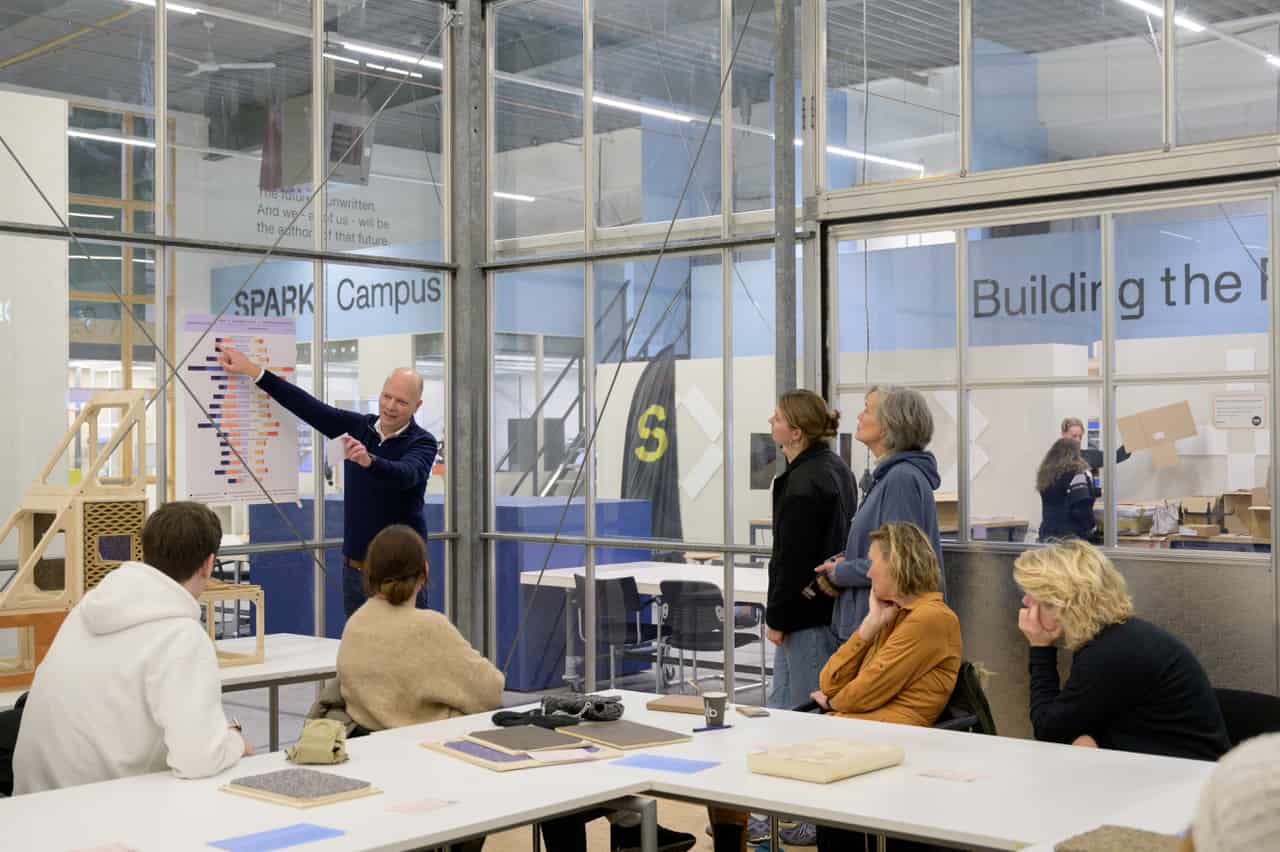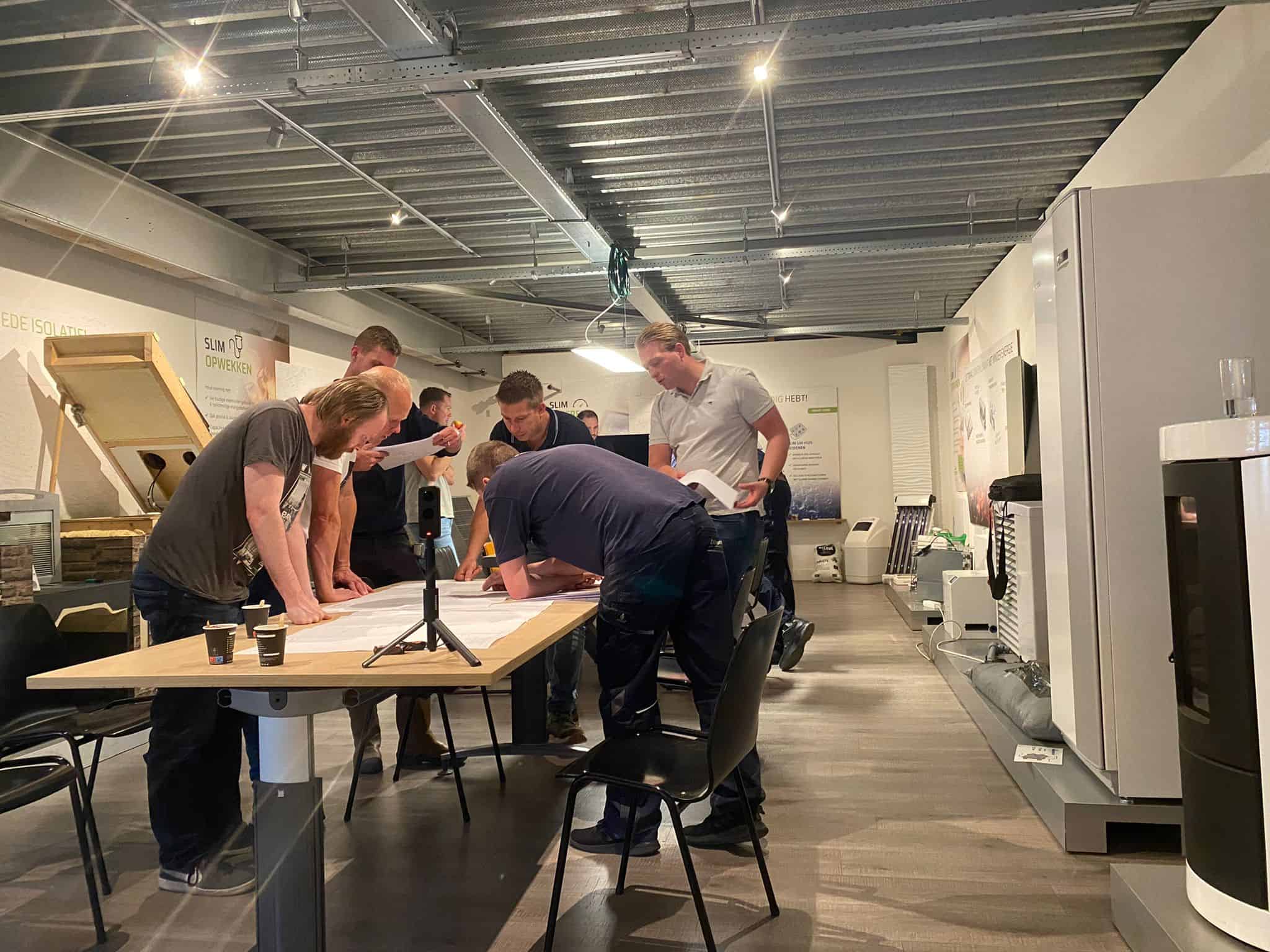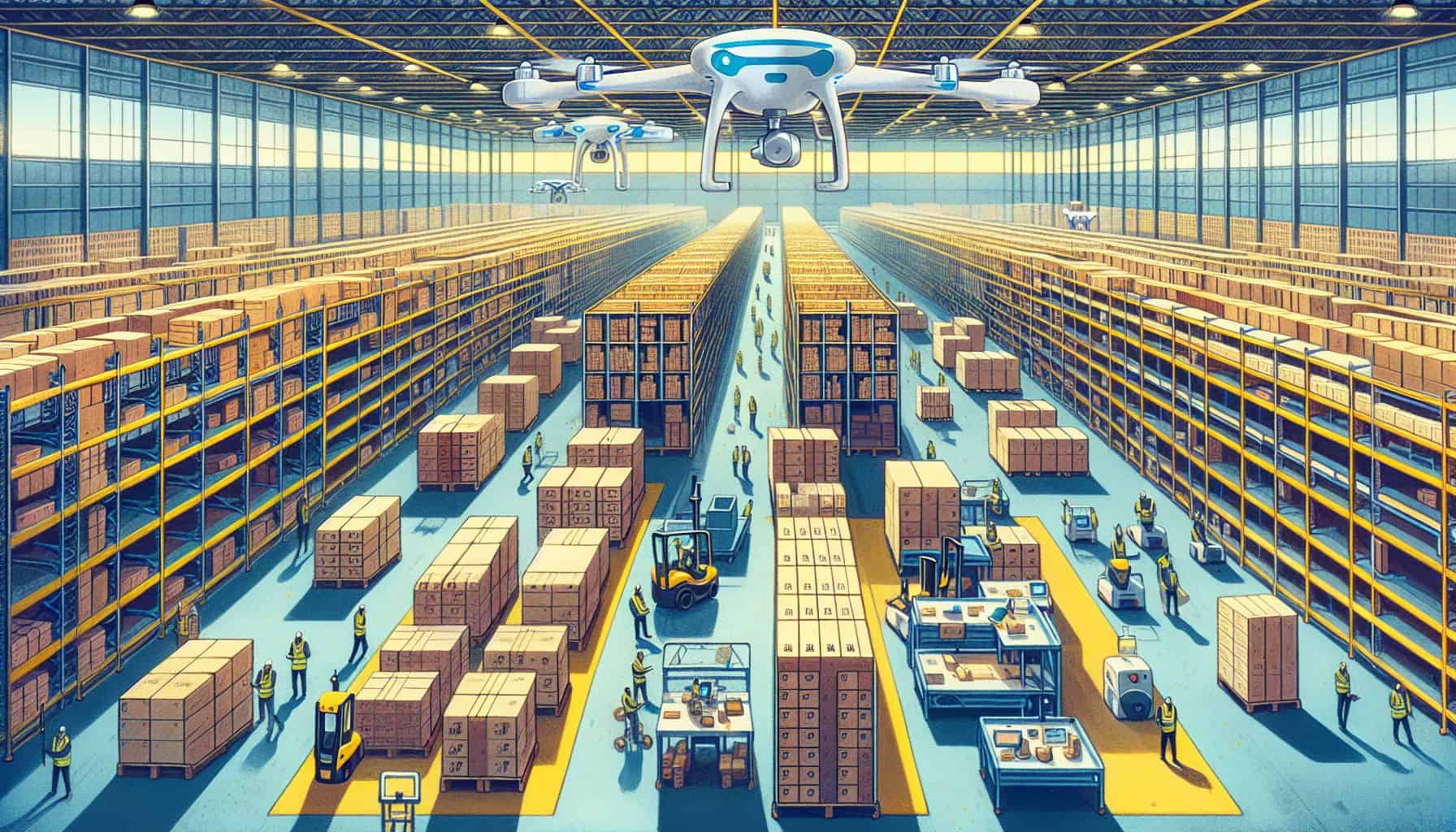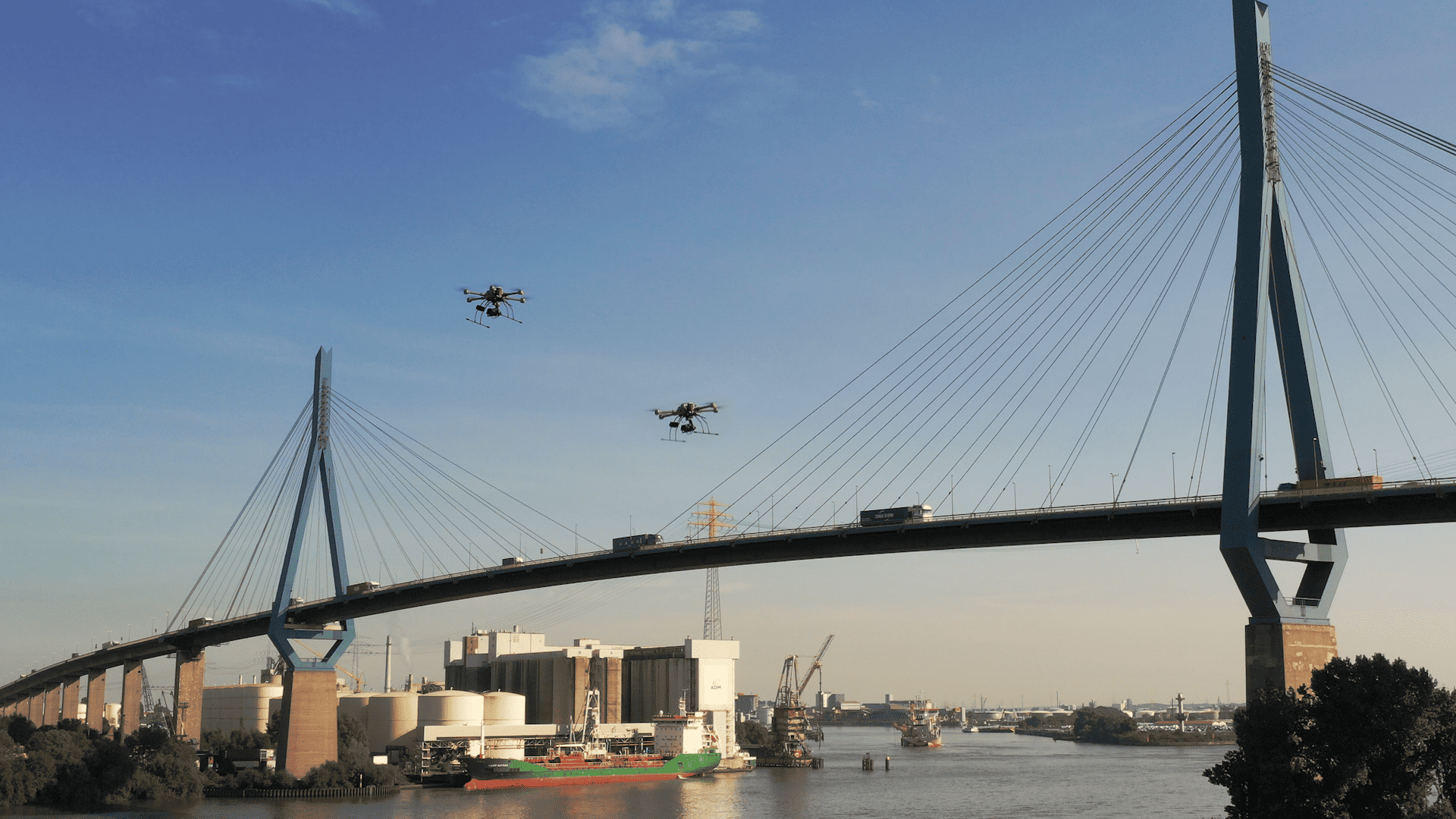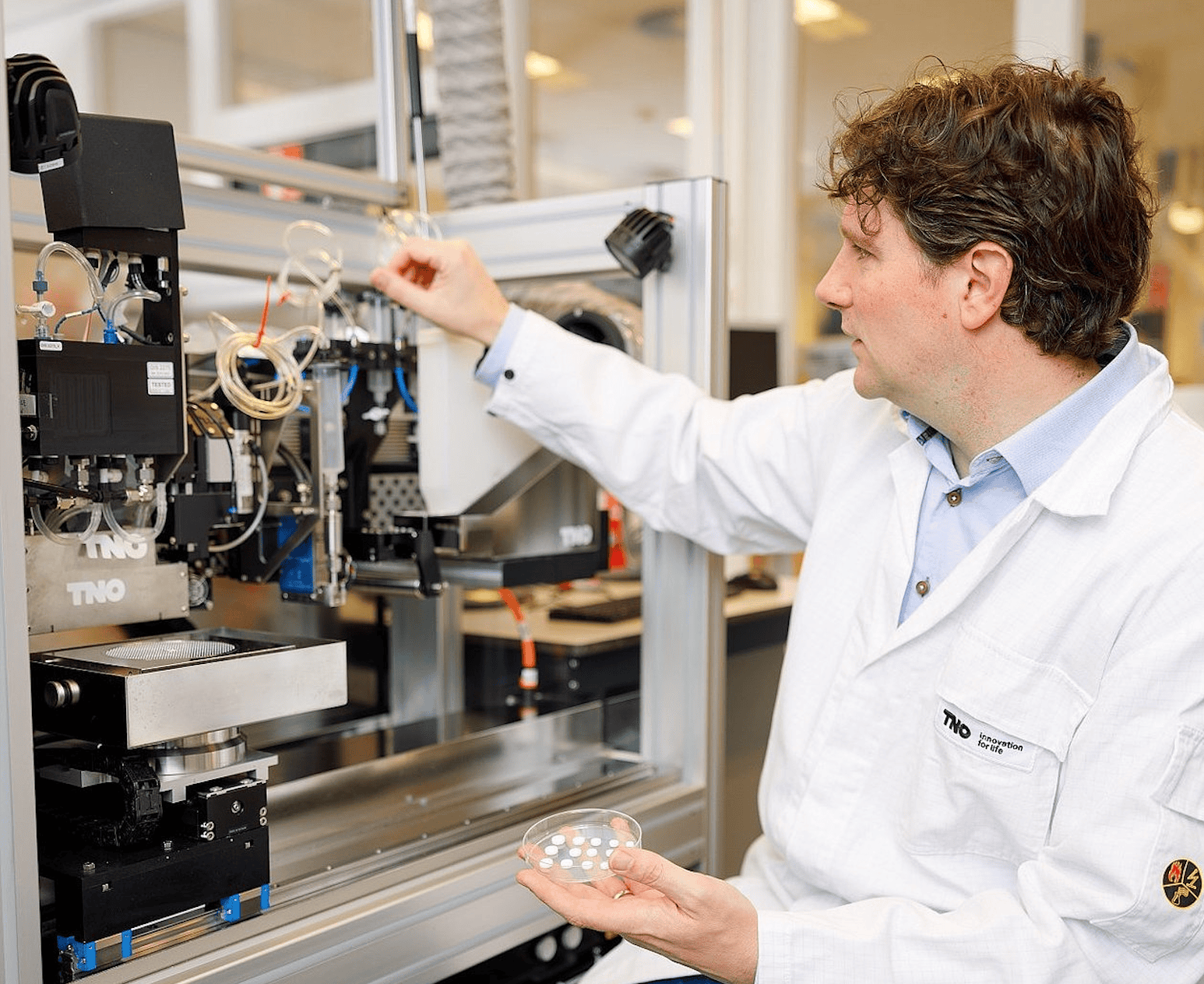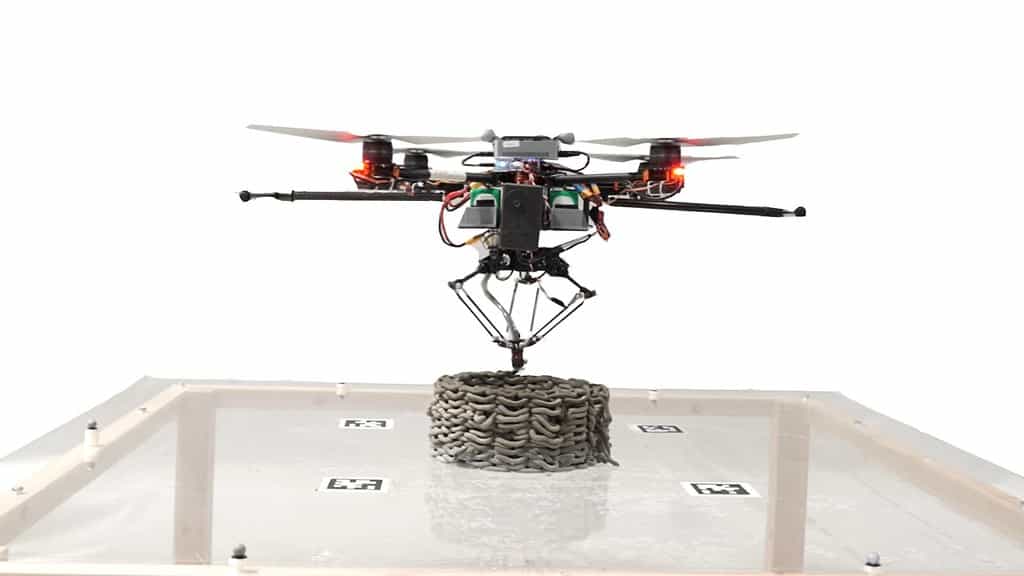
Researchers have created a fleet of bee-inspired flying 3D printers for building and repairing structures in-flight, writes the University of Bath in a press release.
The flying drones employ co-ordinated building methods inspired by natural builders like bees and wasps. They could ultimately be used for manufacturing and building in difficult-to-access or dangerous locations such as tall buildings or to help with post-disaster relief construction, say the researchers.
3D printing is gaining momentum in the construction industry. Both on-site and in the factory, static and mobile robots print materials for use in construction projects, such as steel and concrete structures.
The cement-like material used by the drones was developed by Bath researchers. The projectwas led by Imperial College London.
Bath materials speciality
The researchers say that in-flight 3D printing unlocks doors that will lead to on-site manufacturing and building at difficult-to-access or dangerous locations like tall buildings.
The research has been detailed in the paper Aerial Additive Manufacturing with Multiple Autonomous Robots, which features in the latest edition of Nature. Lead investigator Professor Mirko Kovac, of Imperial’s Department of Aeronautics, said: “We’ve proved that drones can work autonomously and in tandem to construct and repair buildings, at least in the lab. Our solution is scalable, and could help us to construct and repair buildings in difficult-to-reach areas in the future.”
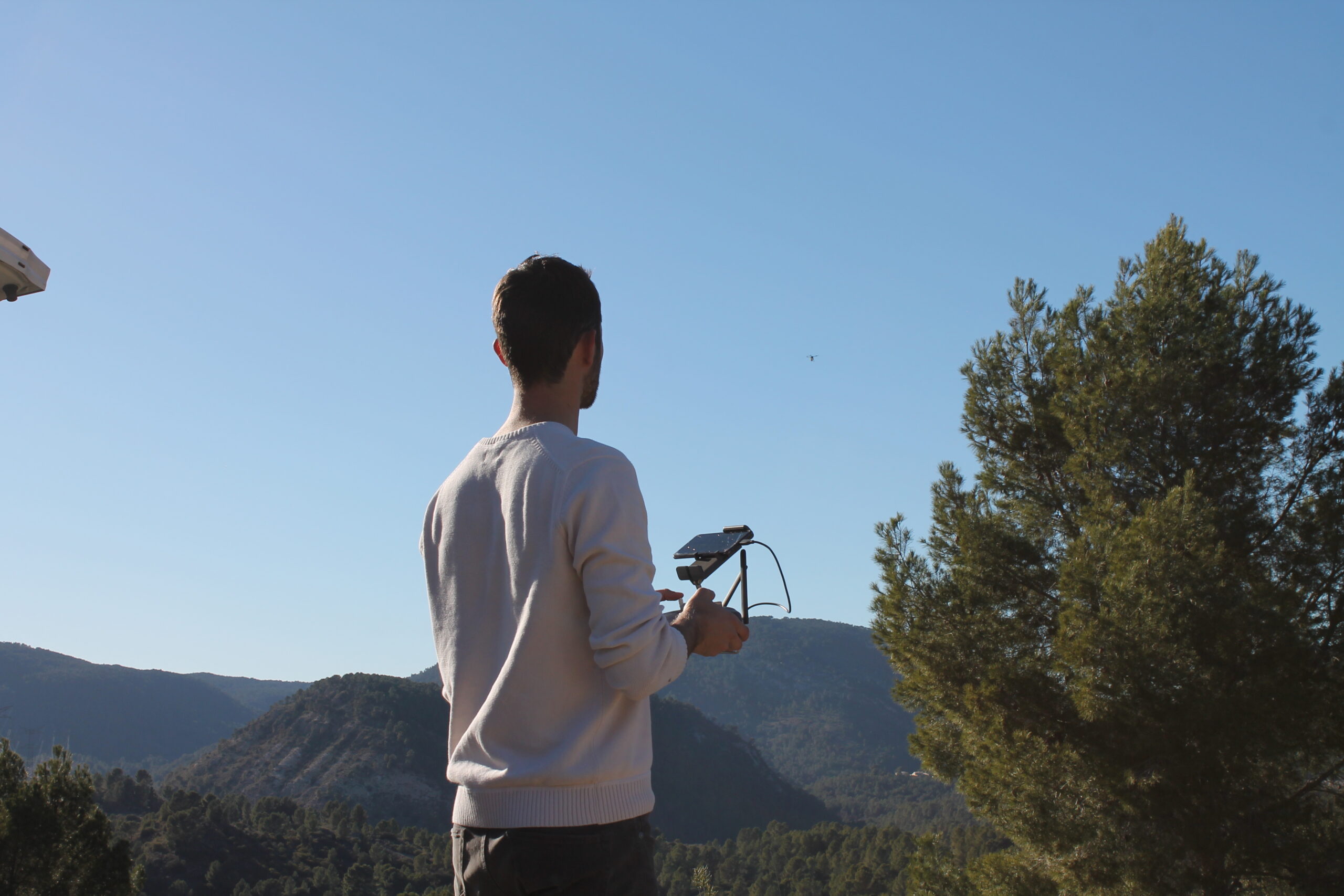
Printing 3D geometries
Aerial-AM uses both a 3D printing and path-planning framework so the drones can adapt to variations in the geometry of the structure as a build progresses. The fleet consists of BuilDrones, which deposit materials during flight. In addition, quality-controlling ScanDrones continually measure the BuilDrones’ output and inform their next manufacturing steps.
To test the concept, the researchers tested four cement-like mixtures for the drones to build with.
Throughout the build, the drones assessed the printed geometry in real-time and adapted their behaviour to ensure they met the build specifications, with a manufacturing accuracy of five millimetres. An important aspect of this is to accurately predict the performance of the printed structure to ensure mechanical integrity through the printing process.
Selected for you!
Innovation Origins is the European platform for innovation news. In addition to the many reports from our own editors in 15 European countries, we select the most important press releases from reliable sources. This way you can stay up to date on what is happening in the world of innovation. Are you or do you know an organization that should not be missing from our list of selected sources? Then report to our editorial team.


